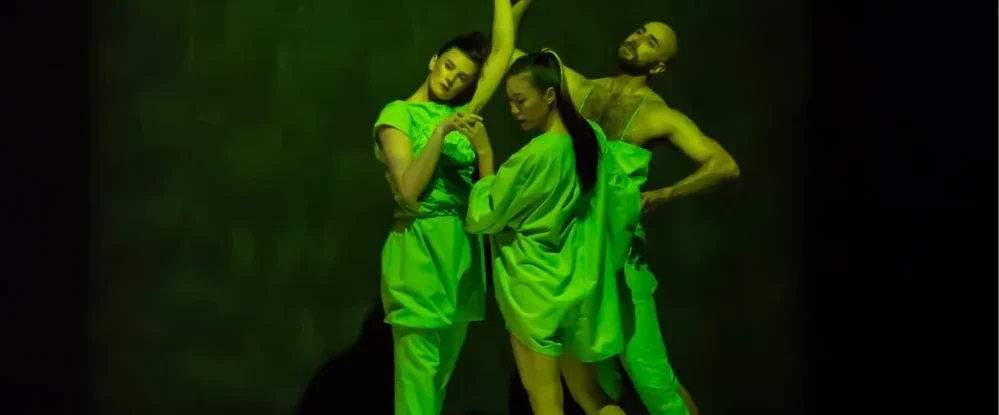How many different ways of moving do you think your body knows?
Like, really knows, so it can begin the first gesture and flow through to the last without stopping to think? Each motion triggering the next, like notes in a scale?
To what contexts do those movement sequences belong? From getting ready for bed, to playing sports, to executing a household chore the way a parent taught you, to habits of celebration with friends? How are these sequences markers of family, community, culture, religion, history? And how do they take up residence inside you, side by side? Do they jostle uneasily or dovetail?
How many of these movement sequences are dances? Maybe they are all dances. But maybe some are more like dances than others.
The movements of Movement were smuggled into the rehearsal room in the bodies of the dancers. Virtually every step in this piece has a personal relationship to at least one of the performers.* Virtually no steps here were created “new.”
Movement is a collage which honors bodies as archives, how much disparate knowledge they hold, and the tales that lie behind each gesture. Tales of how the movement was learned; how it made meaning in its original context, and with whom; how it was so recently shared with the rest of the cast. You may not be able to read these stories, but maybe you can read that they are there, as shadows hovering behind this overlapping index of possibilities.
KP: People will ask if you have a right to do this.
NY: They’re already asking it. This will be taken as a provocation.
KP: And OK, it’s not NOT that.
NY: Agreed. And frankly I don’t have the answers. But I think this might be a good way to approach asking the questions, and for once to insert dancers’ bodies into the conversation. Still, the provocation is not the most interesting part.
KP: What is the most interesting part?
Perhaps it’s simply the encounter with how much human movement there is – how many techniques, styles, stances, rhythms, gestures, stagings, gazes, affects, contexts, contents. Perhaps it’s the opportunity to consider how many different kinds of movement can inhabit a single body. Perhaps it’s the chance to think about how movement transmits, how it moves from person to person, and group to group.
“Sampling” has been going on in the music industry for quite a while. You’d be forgiven for analogizing Movement to that — and why not — but there’s a difference. Sampling was made possible by mechanical reproduction. Movement phrases are transmitted and quoted by bodies. They cannot live on except in the encounter with a unique physicality which leaves its stamp, which transforms even as it transmits.
Ways in which we have learned movement: a partial list
- by joining in the circle
- in a rush of bodies going faster than us, to whom we have to catch up
- next to someone who knows, who takes our hand
- with painful repetition and devotion, working hard to get it right
- by osmosis, without realizing
- “facing front,” staring at a mirror and someone’s back
- caught in an embrace, trying our best to follow or lead
- hearing a voice that gives us an image, then making the image real
- trying to avoid getting hit by a stick
- wanting to be that person on the screen
- thanks to hours and hours of unsung work by our teachers
“The world as a collection of heterogenous parts: an infinite patchwork, or an endless wall of dry stones (a cemented wall, or the pieces of a puzzle, would reconstitute a totality). The world as a sampling: the samples (“specimens”) are singularities, remarkable and nontotalizable parts extracted from a series of ordinary parts.”
–Gilles Deleuze, writing about Walt Whitman
“We contain multitudes.”
What if we think Whitman’s thought not just in terms of perspectives or personalities, but all these well-worn, well-loved patterns of movement?
*The exceptions are traces of steps brought in by performers in earlier iterations of the piece: from Symara Johnson, Ley, Umeshi Rajeendra, Nicholas Sciscione, and Babacar Top. And five repeated gestures from a video of Hawaiian Hula, for which permission was granted by Nālani Kanaka’ole, the originator of the step.
Katherine Profeta is a NYC based dance dramaturg and a professor in dramaturgy at the Yale School of Drama.
Netta Yerushalmy is a choreographer and performer based in New York.
